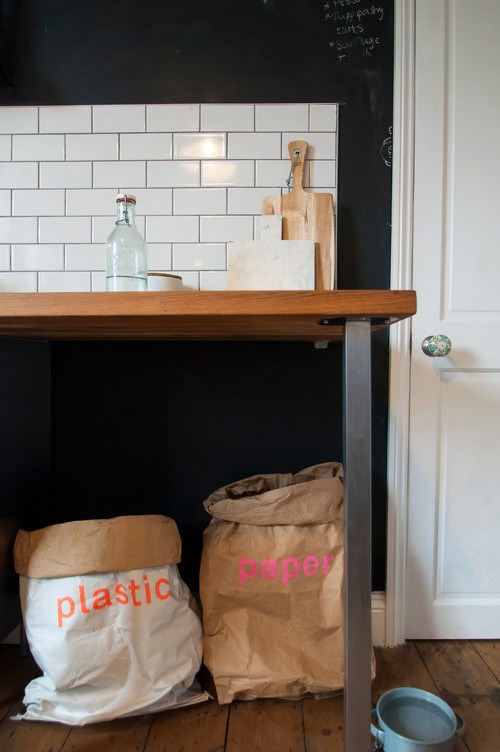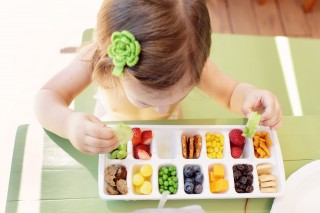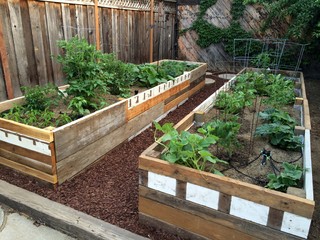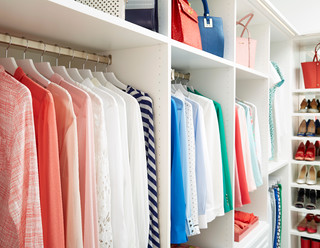Has the news that Victoria is to become the next state to ban single-use plastic bags got you thinking about being greener at home? Single-use bags are already banned in South Australia, Tasmania, the Northern Territory and the Australian Capital Territory, with bans in Western Australia and Queensland due to come into effect next year. Coles and Woolworths are phasing out bags, with a plan for the changeover to be completed by mid 2018. While switching to reusable bags at the supermarket is inevitable, what else can we do to minimise our waste at home? Follow these easy, everyday ideas to lower your household’s environmental footprint.
1. Recycle soft plastics
Although minimising use of soft plastics is the ultimate goal, plastic wraps are all around us. They appear on all manner of pre-packaged goods and are difficult to avoid altogether. Plastic bags may take at least 500 years to decompose, so instead of throwing them out collect them up in a sturdy paper bag such as the one seen here, and take them along to your local REDcycle recycling point (found in supermarkets and other central locations). The soft plastics can then be reused to make park benches and garden furniture. It’s not ideal, but it’s better than the alternative.
Tip: While sorting rubbish and recycling is all-important, take extra care when separating out toxic nasties, such as household cleaners, automotive products, garden chemicals, paints and batteries
2. That’s a wrap
It’s time to rethink the way we pack our lunch boxes. Plastic food wrap is convenient but unnecessary. Invest in waste-free bento boxes for your kids’ lunches, or try beeswax paper wraps. Not only will you be helping the environment, your lunches will look super cute and you’ll feel like you’re channelling Martha Stewart.
Tip: There’s no need to buy beeswax wraps. Here’s how to make your own.
3. Grow your own greens
Grow your own vegies and say goodbye to plastic packaging for good. Spring is a great time to get started. If you have the room, raised planters such as the ones seen here are a good option. But if you’re renting or space is tight, planting vegies and herbs in pots is a good solution. In some ways pots win out – place them in a sunny spot on a deck or patio near the kitchen and you’ll always have herbs on hand to take your meals from simple to sensational. Pots are also an easy and fun way to inject colour and style, and they can easily be moved around so that they’re always getting optimal sun exposure.
4. Compost your green waste
We might not think twice about throwing away unused fruit and vegies, assuming they will harmlessly decompose in landfill, but this is simply not the case. Waste lies stagnant in landfill sites as the oxygen required for the decaying process is not available. The landfill material then releases greenhouse gases that contribute to climate change. All this can be avoided by simply composting rather than disposing of our food waste. Invest in a compost bin, worm farm or Bokashi bin and your garden and the environment will soon see the benefits. Find out which is the best system for you (and perhaps even secure a council discount) here.
Tip: While it is common knowledge that plastic products take many years to decompose, it’s important to recycle other products carefully too. While glass seems a green alternative to plastic, it should never be placed into landfill unless absolutely necessary. Glass may take as long as a million years to decompose in landfill conditions.
5. Be energy efficient
Although it’s tempting to throw all your clothes in the dryer after a long day at work, hanging clothes to dry outside is a far more energy-efficient option. Consider installing a hanging clothes rack in your laundry (as seen here) for days when the weather isn’t on your side.
Filling up landfill with used clothing just doesn’t make sense. According to ABC Radio Melbourne, Australians buy 27 kilograms of new clothing and textiles every year. While textiles made of natural fibres are biodegradable, ‘fast fashion’ is often synthetic, resulting in thousands of micro plastic particles being distributed during washing or when stored in landfill. Donating used clothing or simply buying less in the first place is a good option. If you do donate your clothes, ensure they are washed and in good condition.
Tip: If your old clothes are not in sellable condition consider repurposing them. Your local school might like the fabric for their art room, or get your craft on and create something unique. Handmade is the new black, after all.
The slow fashion movement relates to homewares as well. While it’s easy to nip out and update your decor with the latest style for next to nothing, think twice before bringing too many cheap accessories into your home. Do you truly love the style or are you blindly following a fashion moment that will soon pass? Ask yourself whether you genuinely love or need the item; if you don’t, then resist buying it in the first place.





